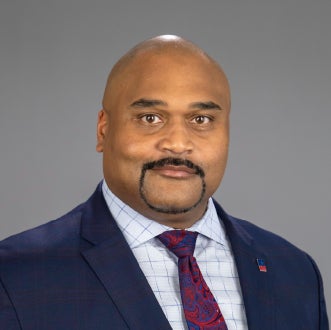Board Work
As I’ve traveled across the state, meeting with boards from San Marcos to Kingsville and talking with members of the Leadership TASB Class of 2024 about what good governance looks like, one question keeps coming up: What is the true work of the board?
The board as a “body corporate” governs the district by leading through policy, while the superintendent uses those policies to manage and develop staff to improve student outcomes. If we use the analogy of a basketball team, the coach and the players each play a part in a team’s success. But if they aren’t in sync, or if they haven’t built trust in each other, wins will be hard to come by.
The key to success is ensuring that the board has a clearly defined vision and has done the foundational work to build cohesion. When that collaborative spirit is missing, strained relationships may result. To help build strong relationships, TASB Board Development Services encourages boards to consider the following three strategies:
1. Take a board self-assessment.
A good place to start is by evaluating the board itself to ensure good policies are in place and there’s effective governance.
The board self-assessment is a critical tool to build a cohesive board with unity around vision and mission. To assist in this work, our TASB team of Board Development Services consultants travels across the state to provide this support for boards.
Trustees take the self-assessment, and the responses are analyzed based on the State Board of Education’s Framework for School Board Development. Once that information is gathered, consultants help boards navigate challenges and opportunities, including identifying areas where they are doing well and where they have the potential to improve. The self-assessment, followed by a workshop, are among the few opportunities trustees have to speak freely and share what’s working well and what could work better.
In doing this work, we’ve often encountered situations where misunderstandings have fostered communication breakdowns in the boardroom. Working through conflicts can seem challenging, but having difficult conversations today often leads to greater collaboration tomorrow. As we say, “It’s hard to hate up close.” A board that cannot communicate effectively will struggle when it comes to focusing on students, which should be every board’s north star.
2. Prioritize policy with the board-superintendent relationship.
Another key component of an effective board is the relationship with the district’s superintendent. Among board responsibilities, nothing is as important as hiring the district’s top leader and then managing the performance of that superintendent with a high-quality and comprehensive annual review. Although that review happens once a year, conversations with the superintendent should be happening throughout the year to ensure the district is heading in the right direction, meeting its goals, and maintaining its vision for student success. Strong board policy can support this process with clearly defined expectations, timelines and processes, and relevant data. When the policy and expectations are clearly defined, there is no room for misunderstandings or miscommunication, which makes the entire process more effective for both the board and the superintendent.
Simply put, when a board leads through strong policy, it strengthens the board-superintendent relationship.
3. Lean into strong board operating procedures.
School board service is more challenging than ever in a climate of increased public scrutiny and politicization. Within this context, boards should consider leaning into their operating procedures to ensure they are both functional and intentional, offering both transparency and clarity on how the board and trustees approach their roles.
A good starting point is creating and maintaining a board calendar that aids intentionality. What gets scheduled gets done. When done consistently and effectively, this process can ensure a culture of transparency, accountability, and strategic alignment.
In addition, the board operating procedure documents might cover everything from onboarding new trustees to choosing board officers, and civility clauses that guide how trustees interact with one another. I’ve seen many great examples of strong operating procedures in my district visits, and it’s clear that much time is spent in carefully and thoughtfully crafting them.
But just writing these procedures isn’t enough; they need to be followed with fidelity. And operating procedures are living, breathing documents that should be reviewed annually, whether by a committee or the board itself. They should not sit on a shelf collecting dust.
Boards and trustees are bound to face challenges, but when boards have clearly defined policies and procedures, it takes away the guesswork. The board knows its governance role and how that relates to the work of the superintendent. Doing the work to build relationships, maintain open communication, and set clear policies and procedures will keep the board on the right path, with a clear focus on achieving the district’s vision and goals.

Robert Long III
Robert Long III is the division director of Board Development Services. Long has worked at TASB since 2022. Before joining TASB, he was the senior regional advocacy director — West Houston — for Raise Your Hand Texas. He served as an elementary and middle school principal in Spring and Fort Bend ISDs. His experience also includes campus leadership positions in Cypress-Fairbanks and Aldine ISDs.
He earned his bachelor’s degree in interdisciplinary studies from Stephen F. Austin State University, a master’s degree in education administration and supervision from Sam Houston State University, and a doctorate in education administration from Texas A&M University. In 2017, he was named a semifinalist in the H-E-B Excellence in Education Awards, one of many honors Long has received.





